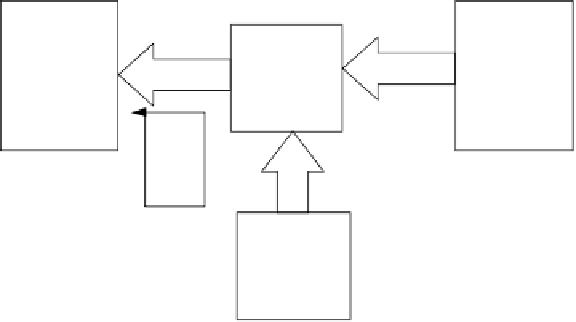Information Technology Reference
In-Depth Information
If cache miss then data is loaded from
DRAM memory into cache and to the
microprocessor (cache controller will
try and guess right next time)
DRAM
memory
Cache
controller
Microprocessor
Controller loads memory
from DRAM into cache memory
If cache hit then
microprocessor
loads for cache
memory
Cache
memory
(SRAM)
Figure A.8
Cache operation
Cache architecture
The main cache architectures are:
•
Look-through cache
. In a look-through cache the system memory is isolated from the
processor address and control busses. In this case the processor directly sends a memory
request to the cache controller which then determines whether it should forward the re-
quest to its own memory or the system memory. Figure A.9 illustrates this type of cache.
It can be seen that the cache controls whether the processor address contents are latched
through to the DRAM memory and it also controls whether the contents of the DRAMs
memory is loaded onto the processor data bus (through the data transceiver). The opera-
tion is described as bus cycle forwarding.
•
Look-aside cache
. A look-aside cache is where the cache and system memory connect to
a common bus. System memory and the cache controller see the beginning of the proces-
sor bus cycle at the same time. If the cache controller detects a cache hit then it must in-
form the system memory before it tries to find the data. If a cache miss is found then the
memory access is allowed to continue.
•
Write-through cache
. With a write-through cache all memory address accesses are seen
by the system memory when the processor performs a bus cycle.
•
Write-back cache
. With a write-back cache all system writes are controlled by the cache
controller. It thus does not write the system memory unless it has to.



